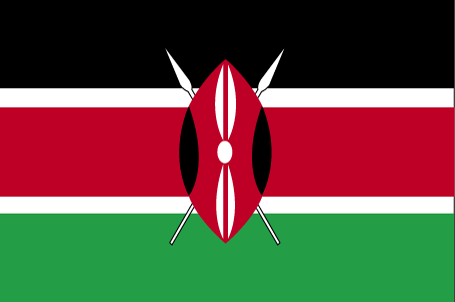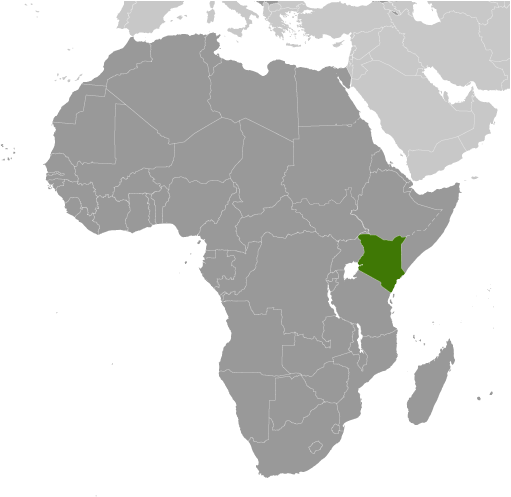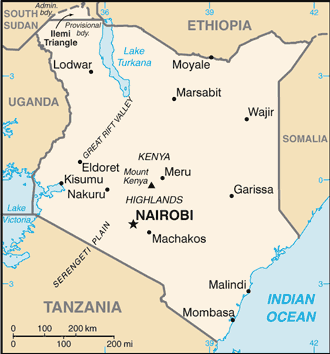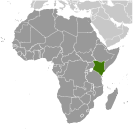
|
|
Advertisements:
EconomyEconomy - overview
Although the regional hub for trade and finance in East Africa, Kenya has been hampered by corruption and by reliance upon several primary goods whose prices have remained low. Low infrastructure investment threatens Kenya's long-term position as the largest East African economy. The IMF halted lending in 2001 when the government failed to institute several anticorruption measures. In the key December 2002 elections, Daniel Arap MOI's 24-year-old reign ended, and a new opposition government took on the formidable economic problems facing the nation. After some early progress in rooting out corruption and encouraging donor support, the KIBAKI government was rocked by high-level graft scandals in 2005 and 2006. In 2006, the World Bank and IMF delayed loans pending action by the government on corruption. The international financial institutions and donors have since resumed lending, despite little action on the government's part to deal with corruption. Post-election violence in early 2008, coupled with the effects of the global financial crisis on remittance and exports, reduced GDP growth to 1.7 in 2008, but the economy rebounded in 2009-10. GDP growth in 2011 was only 4.3% due to inflationary pressures and sharp currency depreciation - as a result of high food and fuel import prices, a severe drought, and reduced tourism. In accordance with IMF prescriptions, Kenya raised interest rates and increased the cash reserve in November 2011. Gdp (purchasing power parity) World Ranking: 83
$72.34 billion (2011 est.)
$68.9 billion (2010 est.) $65.27 billion (2009 est.) Note Data are in 2011 US dollars Gdp (official exchange rate)
$34.8 billion (2011 est.)
Gdp - real growth rate World Ranking: 69
5% (2011 est.)
5.6% (2010 est.) 2.6% (2009 est.) Gdp - per capita (ppp) World Ranking: 195
$1,800 (2011 est.)
$1,700 (2010 est.) $1,700 (2009 est.) Note Data are in 2011 US dollars Gdp - composition by sector
Agriculture 19%
Industry 16.4% Services 64.6% (2011 est.) Labor force World Ranking: 32
18.39 million (2011 est.)
Labor force - by occupation
Agriculture 75%
Industry and services 25% (2007 est.) Unemployment rate World Ranking: 185
40% (2008 est.)
40% (2001 est.) Population below poverty line
50% (2000 est.)
Household income or consumption by percentage share
Lowest 10% 1.8%
Highest 10% 37.8% (2005) Distribution of family income - gini index World Ranking: 50
42.5 (2008 est.)
44.9 (1997) Investment (gross fixed) World Ranking: 131
15.8% of GDP (2011 est.)
Budget
Revenues $6.611 billion
Expenditures $8.38 billion (2011 est.) Taxes and other revenues World Ranking: 171
19% of GDP (2011 est.)
Budget surplus (+) or deficit (-) World Ranking: 162
-5.1% of GDP (2011 est.)
Public debt World Ranking: 56
49.9% of GDP (2011 est.)
49.6% of GDP (2010 est.) Inflation rate (consumer prices) World Ranking: 206
14% (2011 est.)
4% (2010 est.) Central bank discount rate
7% (31 December 2010 est.)
NA% (31 December 2009 est.) Commercial bank prime lending rate World Ranking: 51
15.05% (31 December 2011 est.)
14.37% (31 December 2010 est.) Stock of narrow money World Ranking: 81
$8.913 billion (31 December 2011 est.) $7.148 billion (31 December 2010 est.) Stock of broad money World Ranking: 88
$17.89 billion (31 December 2011 est.) $15.82 billion (31 December 2010 est.) Stock of domestic credit World Ranking: 87
$18.25 billion (31 December 2011 est.) $16.12 billion (31 December 2010 est.) Market value of publicly traded shares World Ranking: 66
$10.2 billion (31 December 2011) $14.46 billion (31 December 2010) $10.76 billion (31 December 2009) Agriculture - products
Tea, coffee, corn, wheat, sugarcane, fruit, vegetables; dairy products, beef, pork, poultry, eggs Industries
Small-scale consumer goods (plastic, furniture, batteries, textiles, clothing, soap, cigarettes, flour), agricultural products, horticulture, oil refining; aluminum, steel, lead; cement, commercial ship repair, tourism Industrial production growth rate World Ranking: 96
3.1% (2011 est.)
Electricity - production World Ranking: 103
6.79 billion kWh (2008 est.)
Electricity - consumption World Ranking: 112
5.738 billion kWh (2008 est.)
Electricity - exports
41 million kWh (2008 est.)
Electricity - imports
16 million kWh (2008 est.)
Oil - production World Ranking: 116
136.2 bbl/day (2010 est.)
Oil - consumption World Ranking: 84
78,000 bbl/day (2010 est.)
Oil - exports World Ranking: 97
8,061 bbl/day (2009 est.)
Oil - imports World Ranking: 71
80,160 bbl/day (2009 est.)
Oil - proved reserves World Ranking: 147
0 bbl (1 January 2011 est.)
Natural gas - production World Ranking: 197
0 cu m (2009 est.)
Natural gas - consumption World Ranking: 191
0 cu m (2009 est.)
Natural gas - exports World Ranking: 123
0 cu m (2009 est.)
Natural gas - imports World Ranking: 81
0 cu m (2009 est.)
Natural gas - proved reserves World Ranking: 191
0 cu m (1 January 2011 est.)
Current account balance World Ranking: 160
-$3.675 billion (2011 est.)
-$2.512 billion (2010 est.) Exports World Ranking: 110
$5.768 billion (2011 est.)
$5.225 billion (2010 est.) Exports - commodities
Tea, horticultural products, coffee, petroleum products, fish, cement Exports - partners
Uganda 10%, Tanzania 9.7%, Netherlands 8.5%, UK 8.2%, US 6.2%, Democratic Republic of the Congo 4.2% (2011) Imports World Ranking: 86
$13.49 billion (2011 est.)
$11.53 billion (2010 est.) Imports - commodities
Machinery and transportation equipment, petroleum products, motor vehicles, iron and steel, resins and plastics Imports - partners
China 14.8%, India 14%, UAE 10.1%, South Africa 7.8%, Saudi Arabia 7.1% (2011) Reserves of foreign exchange and gold World Ranking: 87
$5.298 billion (31 December 2011 est.) $4.321 billion (31 December 2010 est.) Debt - external World Ranking: 98
$8.947 billion (31 December 2011 est.) $8.4 billion (31 December 2010 est.) Stock of direct foreign investment - at home World Ranking: 90
$2.626 billion (31 December 2011 est.) $2.29 billion (31 December 2010 est.) Stock of direct foreign investment - abroad World Ranking: 78
$300 million (31 December 2011 est.) $290 million (31 December 2010 est.) Exchange rates
Kenyan shillings (KES) per US dollar - 88.811 (2011 est.)79.233 (2010 est.) 77.352 (2009) 68.358 (2008) 68.309 (2007) Fiscal year
1 July - 30 June
Comments
Add a new comment: |
Advertisement
Members area
Kenya (Nairobi):
 
GPS points from Kenya (Nairobi)
|
||||||||

 Founding president and liberation struggle icon Jomo KENYATTA led Kenya from independence in 1963 until his death in 1978, when President Daniel Toroitich arap MOI took power in a constitutional succession. The country was a de facto one-party state from 1969 until 1982 when the ruling Kenya African National Union (KANU) made itself the sole legal party in Kenya. MOI acceded to internal and external pressure for political liberalization in late 1991. The ethnically fractured opposition failed to dislodge KANU from power in elections in 1992 and 1997, which were marred by violence and fraud, but were viewed as having generally reflected the will of the Kenyan people. President MOI stepped down in December 2002 following fair and peaceful elections. Mwai KIBAKI, running as the candidate of the multiethnic, united opposition group, the National Rainbow Coalition (NARC), defeated KANU candidate Uhuru KENYATTA and assumed the presidency following a campaign centered on an anticorruption platform. KIBAKI's NARC coalition splintered in 2005 over a constitutional review process. Government defectors joined with KANU to form a new opposition coalition, the Orange Democratic Movement (ODM), which defeated the government's draft constitution in a popular referendum in November 2005. KIBAKI's reelection in December 2007 brought charges of vote rigging from ODM candidate Raila ODINGA and unleashed two months of violence in which as many as 1,500 people died. UN-sponsored talks in late February 2008 produced a power-sharing accord bringing ODINGA into the government in the restored position of prime minister. Kenya in August 2010 adopted a new constitution that eliminates the role of prime minister after the next presidential election.
Founding president and liberation struggle icon Jomo KENYATTA led Kenya from independence in 1963 until his death in 1978, when President Daniel Toroitich arap MOI took power in a constitutional succession. The country was a de facto one-party state from 1969 until 1982 when the ruling Kenya African National Union (KANU) made itself the sole legal party in Kenya. MOI acceded to internal and external pressure for political liberalization in late 1991. The ethnically fractured opposition failed to dislodge KANU from power in elections in 1992 and 1997, which were marred by violence and fraud, but were viewed as having generally reflected the will of the Kenyan people. President MOI stepped down in December 2002 following fair and peaceful elections. Mwai KIBAKI, running as the candidate of the multiethnic, united opposition group, the National Rainbow Coalition (NARC), defeated KANU candidate Uhuru KENYATTA and assumed the presidency following a campaign centered on an anticorruption platform. KIBAKI's NARC coalition splintered in 2005 over a constitutional review process. Government defectors joined with KANU to form a new opposition coalition, the Orange Democratic Movement (ODM), which defeated the government's draft constitution in a popular referendum in November 2005. KIBAKI's reelection in December 2007 brought charges of vote rigging from ODM candidate Raila ODINGA and unleashed two months of violence in which as many as 1,500 people died. UN-sponsored talks in late February 2008 produced a power-sharing accord bringing ODINGA into the government in the restored position of prime minister. Kenya in August 2010 adopted a new constitution that eliminates the role of prime minister after the next presidential election.